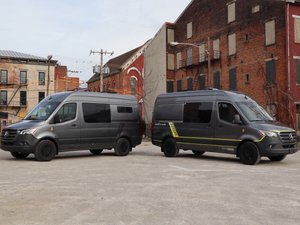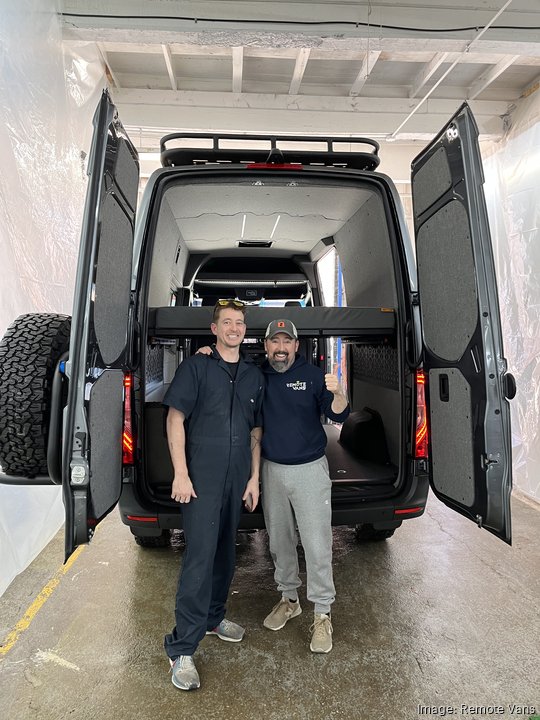
A Cincinnati startup is shifting into high gear after relocating to a new headquarters in recent months. The move comes at a critical juncture, its founders said, and there are plans to more than double in size over the next year.
Remote Vans, a Class B RV manufacturer that converts premium Mercedes Sprinter vans for travel, work and play, is now operating in a 27,000-square-foot facility in St. Bernard. The warehouse, a former steel factory located off East Ross Avenue, offers several advantages over its former home at the historic Christian Moerlein Malt House Tap Room brewery building in Over-the-Rhine.
It has higher ceilings for vehicle lifts. It’s a more open, contiguous space. Remote Vans can now operate a true assembly line. Each Sprinter van goes through about 10 to 12 different stations in the conversion process – upholstery and cabinets, even custom kitchens are installed, so it’s fully loaded – before it’s back out the door and on the market.
Tony Alexander, co-founder and CEO, said Remote Vans can build out 150 to 200 vans a year at the new location. It’s currently scaling to reach that number by 2025.
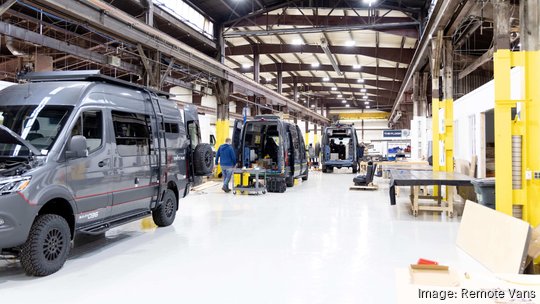
There is also an acre of land available for future growth. If it adds another building, the company could double production again to 400 to 500 vans a year.
That’s likely the max it would produce, he said. Remote Vans wants to be the Aston Martin (a luxury British sports car maker) of the van world, Daryn Hillhouse, the company’s other co-founder and chief operations officer, said.
“We definitely want to be more Ferrari than Toyota,” Alexander told me. “There’s no aspirations to turn this into a Winnebago-size operation. We want to be limited numbers; highly sought after. We want a waiting list a year long because so many people want our product.”
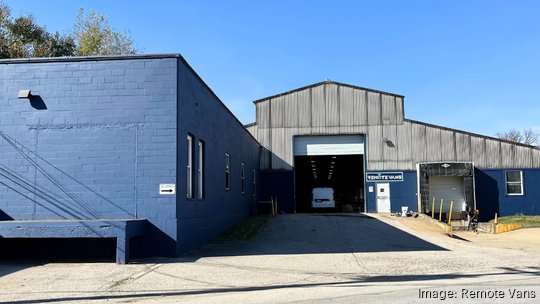
Alexander, the ex-director of the once-famed accelerator the Brandery, and business partner Hillhouse, a native South African and a Brandery graduate, first came up with the idea for Remote Vans during the Covid-19 lockdowns. The vehicles are customized to give customers the ability to work from anywhere. Its most popular, and most expensive van, dubbed the “Oasis,” (priced at $182,000) includes a queen drawbridge bed, air conditioner, stowable interior shower and a kitchen with sink, storage drawers and exterior table.
Starlink satellite internet access is standard.
Hillhouse classifies the product as a premium adventure van. Remote Vans is for adventure enthusiasts who want to get away for a weekend to go camping, kayaking or cycling. It’s also for grandparents who want to take the grandkids out for an ice cream on a Sunday.
It’s a vehicle that’s just as capable on-road as it is off. Hillhouse considers it a differentiator.
“It's a van that’s suited for the small and big adventures,” he said. “You can play your PlayStation from anywhere and your kids can watch Netflix from anywhere. We're the only van company focusing on life on the road, while also having all the creature comforts you’d typically have at home.
“The other thing about the RV industry, it’s young in terms of these vans, so we're not hiring existing RV industry people," Hillhouse added. "We’re creating a new labor pool of specialists. We want people to be fighting over the opportunity to work here.”
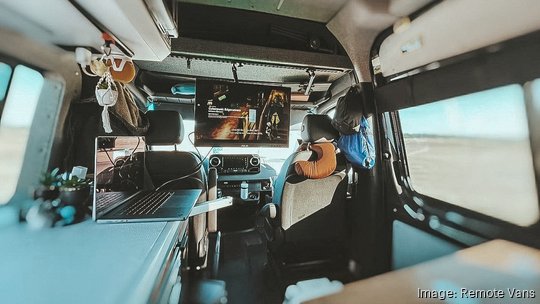
Since its launch in 2021, the company has grown at a geometric rate, Alexander said. That’s part of the reason why the move to a new HQ comes at such a critical juncture.
When it launched, Remote Vans sold direct-to-consumer, advertising on various sites like RV Trader, Facebook and Google. Remote Vans now sells 100% through RV dealers. That offers several advantages. Dealers are able to handle service and warranty policies. It frees Remote Vans to scale faster.
In January, the company received RV Industry Association (RVIA) certification. It’s an approval that required more than a year of product development and testing, a nod that means the quality and safety of its builds has been signed off “at the highest level,” the company said. A fundraise, currently in process, should be its last, Alexander said. It would put the company in it the best position to weather any cyclical changes in the RV market.
And Remote Vans expects to release its 2024 models soon. "We want to make a big splash with that," Hillhouse said.
Now it’s about execution. Also key: continuing to innovate. That’s been the pitfall for some of the Remote Van competitors, Hillhouse said. It means constantly searching for better products, better ways to build the vans, and outfitting them with the latest technologies.
“It's what we want to be known for,” Hillhouse said. “These vans are different than everything else on the market. And they’re built here in Cincinnati.”
